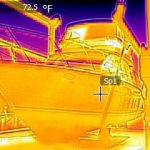 When it comes to the maintenance and evaluation of a vessel, one crucial aspect that cannot be overlooked is the inspection of interior woodwork and joinery. As a Marine Surveyor 33484, it is essential to ensure a thorough examination of these areas to identify any potential issues that could compromise the safety and integrity of the vessel.
When it comes to the maintenance and evaluation of a vessel, one crucial aspect that cannot be overlooked is the inspection of interior woodwork and joinery. As a Marine Surveyor 33484, it is essential to ensure a thorough examination of these areas to identify any potential issues that could compromise the safety and integrity of the vessel.
At Suncoast Marine Surveying, we understand the importance of conducting a detailed inspection of interior woodwork and joinery. Our experienced marine surveyor 33484 is well-versed in identifying common problems such as rot, decay, mold, and structural issues that can arise in wooden components. In this article, we will discuss some key steps that should be taken to ensure a comprehensive assessment of interior woodwork and joinery.
1. Start by visually inspecting all wooden surfaces: As a Marine Surveyor, the first step in evaluating interior woodwork and joinery is to conduct a visual inspection of all wooden surfaces. Look for any signs of discoloration, warping, cracking, or other visible damage that may indicate underlying issues.
2. Check for moisture damage: Moisture is one of the most common culprits when it comes to damage in wooden structures. Use a moisture meter to check the moisture content of the wood and look for any signs of water intrusion or leaks that could be causing damage.
3. Inspect joints and connections: Pay close attention to the joints and connections in the woodwork and joinery. Loose or deteriorating joints can compromise the structural integrity of the vessel and should be addressed promptly.
4. Tap test for soundness: Use a small hammer or mallet to gently tap on different areas of the woodwork. A hollow or dull sound may indicate rot or decay, while a solid, resonant sound suggests sound wood.
5. Look for signs of insect infestation: Wood-boring insects such as termites and beetles can wreak havoc on wooden structures if left unchecked. Look for small holes, sawdust-like debris, or insect carcasses as indicators of an infestation.
6. Assess the condition of finishes: The finishes applied to interior woodwork not only enhance its appearance but also provide protection against moisture and wear. Evaluate the condition of the finishes and look for any peeling, cracking, or signs of deterioration.
7. Document findings: Make detailed notes and take photographs of any areas that require attention. Documenting your findings is essential for providing a comprehensive report to the vessel owner or insurance company.
8. Provide recommendations for repair or maintenance: Based on your inspection findings, provide clear and actionable recommendations for addressing any issues identified in the interior woodwork and joinery. This may include repairs, replacement, or regular maintenance procedures.
As a Marine Surveyor, conducting a thorough inspection of interior woodwork and joinery is critical to ensuring the safety and longevity of a vessel. By following these steps and working with a reputable surveying company like Suncoast Marine Surveying, you can rest assured that your vessel is in good hands.
For expert marine surveying services in the Palm Beach area, contact Suncoast Marine Surveying today. Our team of experienced professionals is dedicated to providing thorough and accurate evaluations of your vessel’s condition. Trust us to help you maintain the beauty and integrity of your vessel’s interior woodwork and joinery.


